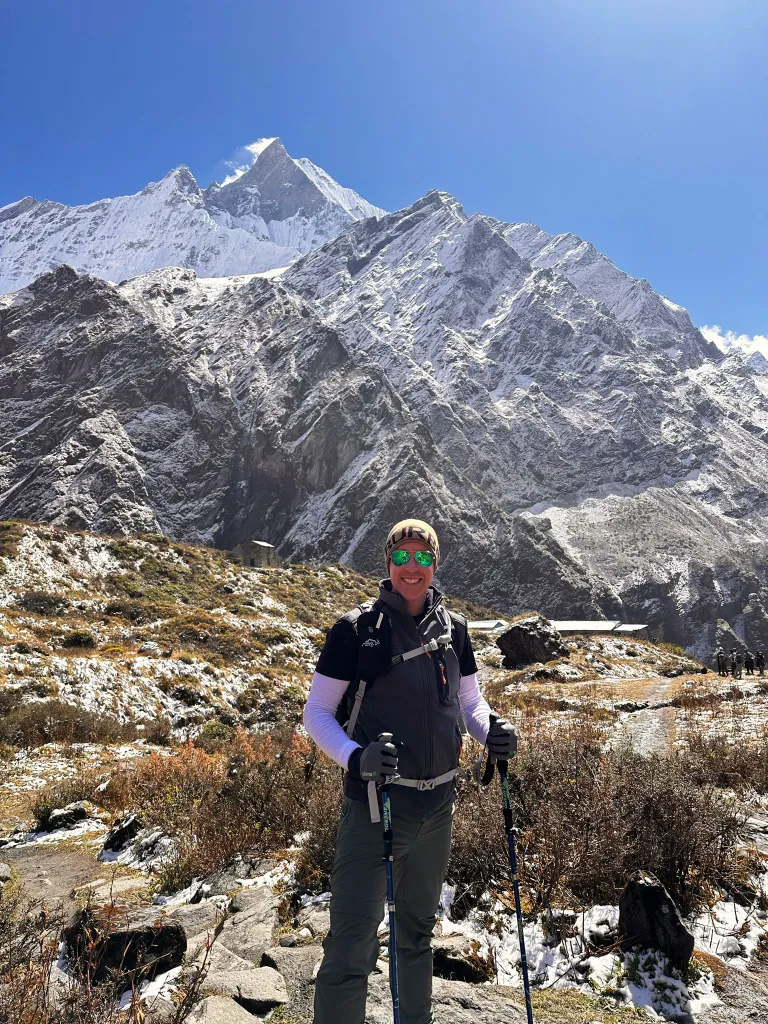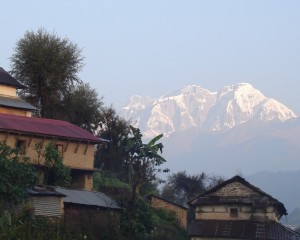The Ultimate Guide to Selecting Your Trekking Guide in Nepal
Are you planning an exciting trekking journey in Nepal, where majestic mountains and captivating landscapes await? However, as you prepare for the adventure, one crucial element stands between an ordinary and extraordinary trek: hiring the right trekking guide in Nepal.
Likewise, navigating Nepal's diverse terrains and cultural nuances demands expertise and experience.
Beyond merely providing navigational assistance, trekking guides play a pivotal role in elevating the overall trekking experience.
How to Hire a Trekking Guide in Nepal?
Nepal, a land of breathtaking landscapes and towering peaks, offers an unparalleled trekking experience to adventurers worldwide. While exploring the rugged terrains and picturesque trails seems risky, it is crucial to acknowledge the significance of hiring a competent trekking guide.
These guides, often seasoned locals, possess a wealth of knowledge about the region's terrain, culture, and weather patterns.
Let's delve into the process of hiring a trekking guide in Nepal, where every step paves the way for an incredible journey ahead.
Researching the Trekking Route
When preparing for a trekking expedition in Nepal, it's crucial to understand the different difficulty levels and specific requirements of different routes. Some trails demand physical fitness, technical skills, or altitude acclimatization.
This knowledge empowers you to select a route aligned with your abilities and aspirations. Nepal offers a rich patchwork of trekking ways, from iconic paths like Everest Base Camp to lesser-known trails like Annapurna Circuit, each with unique landscapes and cultural experiences.
Additionally, delving into these options helps uncover Nepal's hidden treasures. Also, it allows you to choose a journey that resonates with your curiosity and adventurous spirit.

Personal factors like previous trekking experience, altitude comfort, and desired challenge level should guide your route selection. In contrast, ensure an enjoyable and harmonious trekking adventure tailored to your preferences.
Selecting Licensed Guides
Selecting a licensed trekking guide in Nepal is foundational for a secure and enriching journey. The Nepalese government mandates guide licensing, ensuring professionalism and competence.
Additionally, this requirement underscores the significance of a well-credential guide. You should also confirm the guide's legitimacy guarantees a knowledgeable and reliable companion. Licensed guides offer safety and a deep wellspring of local knowledge, intimately understanding terrain, weather, and culture.
Their expertise ensures informed decisions that prioritize your well-being. At the same time, their insights enrich your journey with authentic connections to Nepal's essence. You can unlock safety and an unforgettable expedition infused with the heart of Nepal.
Evaluating Guide Experience and Reviews
When choosing a trekking guide, a thorough evaluation is critical. You should gather information about potential directions, including their backgrounds, experience, and qualifications, to provide a comprehensive understanding of their capabilities. This groundwork facilitates an informed decision.
Moreover, a guide's familiarity with the chosen trekking route is crucial, as their experience navigating the terrain, challenges, and highlights enhances the journey.
Online reviews and ratings offer essential insights into a guide's professionalism and service quality, reflecting the experiences of previous trekkers.
Personal recommendations from fellow travelers who have embarked on similar treks provide nuanced insights that complement reviews by enhancing your confidence in the guide selection process.
Prioritizing Safety Measures
It would help if you prioritized safety during trekking is paramount. A responsible guide's commitment to comprehensive safety protocols is vital.
The inquiry about their training and certifications in first aid and emergency response can ensure the guidance of capable hands, well-prepared to address unforeseen challenges along the journey.
Additionally, your guide's possession of essential safety equipment, like a satellite phone or GPS tracker, establishes a line of communication and tracking for swift assistance in emergencies.
The proactive approach fosters a secure trekking experience. In contrast, your well-being and peace of mind take precedence in the diverse landscapes of Nepal.
Crafting Your Trekking Adventure
Clear communication with your guide is essential when preparing for a trekking adventure.
You should discuss your preferences, expectations, and requirements to tailor the experience to your vision. An established itinerary is crucial, so collaborate with your guide to outline daily distances, resting points, and landmarks for a smooth and enjoyable journey.
Additionally, balance your aspirations with practicalities and agree on a suitable trek difficulty and schedule that aligns with your capabilities. Transparently discuss costs, including guide fees, permits, accommodation, and meals, with a grasp of the financial aspects and inclusions.
Moving on to guide fees, understand the factors influencing costs, such as trek difficulty, duration, and expertise. Fair negotiation is vital, striking a balance that values both your investment and the guide's expertise. Also, seek a fee that reflects service quality, promoting a positive and collaborative trekking experience.
Confirming Details in Writing
Summarizing agreed-upon terms in writing ensures a solid understanding between you and your guide. It prevents misunderstandings and serves as a reference throughout the trek.
A formal written agreement establishes a legal and logistical foundation, aligning all parties with the trek's essential elements. Including itinerary, costs, and vital information eliminates ambiguity, enhancing preparedness for a smoother journey.
The documented agreement is a reliable guide during the trek with direction and confidence, facilitating effective responses to unexpected situations.
To wrap up, Every aspect is necessary before you choose the trekking guide in Nepal. Nepal Vision Treks helps you to make your journey effective and memorable.
FAQS
- Do I need a guide for trekking in Nepal?
While not mandatory, having a guide for trekking in Nepal is highly recommended for safety, local expertise, and an enriched experience.
- What is the best age to start trekking?
There's no specific age to start trekking; it depends on individual fitness and preferences, but many people begin in their late teens to early adulthood.
- Can we trek without shoes?
Trekking without proper shoes is not recommended for safety and comfort; appropriate footwear is essential.
- Is trekking in Nepal only for experienced hikers?
Not necessarily; Nepal offers treks suitable for various skill levels.
- Do I need to be physically fit to trek in Nepal?
A reasonable level of fitness is recommended for most treks.
- Are permits required for trekking in Nepal?
Yes, permits are required for many trekking areas; check the specific requirements.
- Can I trek independently, or do I need a guide?
You can trek independently in some areas, but a guide is recommended for safety and cultural insights.






